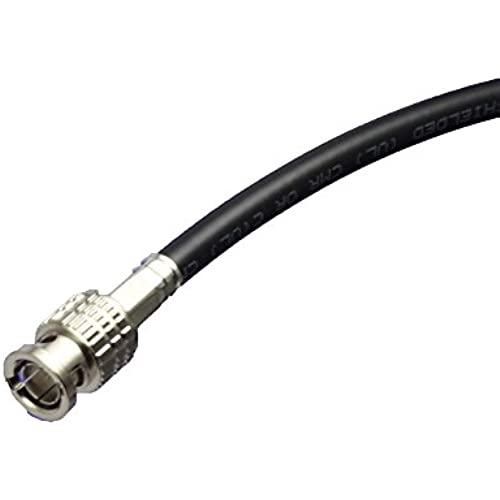





















Blue Jeans Cable 3G/6G HD-SDI Cable, Made with Belden 1694A and Canare BNCs (25 Foot, Black)
-

Philip Thomas
Greater than one weekWork well cant complint
-

scottrva
> 3 daySo, youre looking for a good quality HD-SDI cable, right? Well, stop looking, this is the one you want. These built really well. theyre thick but still bendable, they have nice connectors and theyre not overly expensive. Ive been using 100 runs to connect my Canon XA25s to BlackMagic ATEMs and monitors, havent had any issues so far. Im planning on using these exclusively going forward.
-

T. Van Valkenburgh
05-06-2025Im using this cable to connect a PTZOptics camera to a Blackmagic Designs ATEM thru a Blackmagic SDI to HTMI converter. I wanted a quality cable as this was an all day install thru concrete floors and inaccessible existing 1/2 conduit, but needed to be reasonably priced as it was for a church. This cable fits that requirement perfectly. The cable and connectors used are exactly what was advertised, and Im getting beautiful clear images that get a lot of wows from the tech team, even though the install is in a noisy electronic environment. I will be making future purchases from Blue Jeans Cable.
-

Dean Beanz
> 3 dayDoes not work. I bought 4 and none of them work
-

browny21
> 3 dayAwesome cable. Good quality construction, have not had a problem with cable from these guys at any length. Good people, too. There communication is excellent.
-

Lefty_Biker
> 3 dayThis is a great SDI cable. Used it on a video shoot running signal from a DSLR camera using a HDMI to SDI converter and it worked perfect. I love the fact that the connector is easy to grip when it comes to removing the cable.
-

ET
> 3 dayUsing the cable with other for a length of over 250 for football sideline shots.
-

Empire Video Productions
> 3 dayProduct shipped as expected. Use it in live web streaming with no issues. Rope it in with care to prevent bends and pinches in the cable - but if you are a videographer you know this already.
-

Richard Addison
> 3 dayItem was as described.
-

Nathan Wheeler
> 3 dayDid the job








